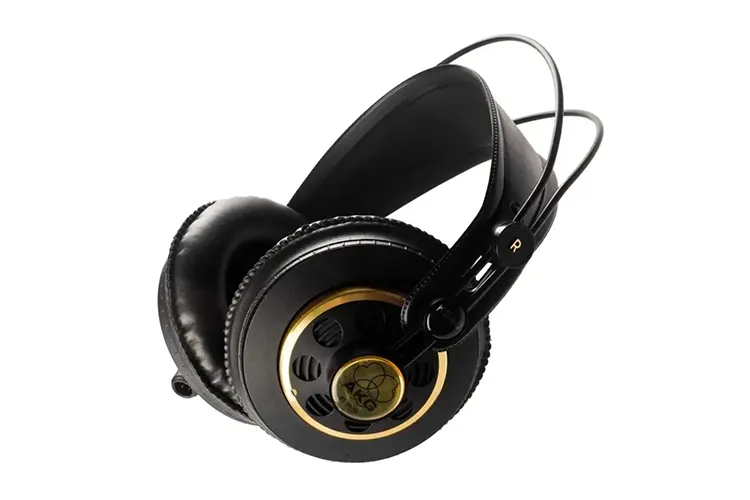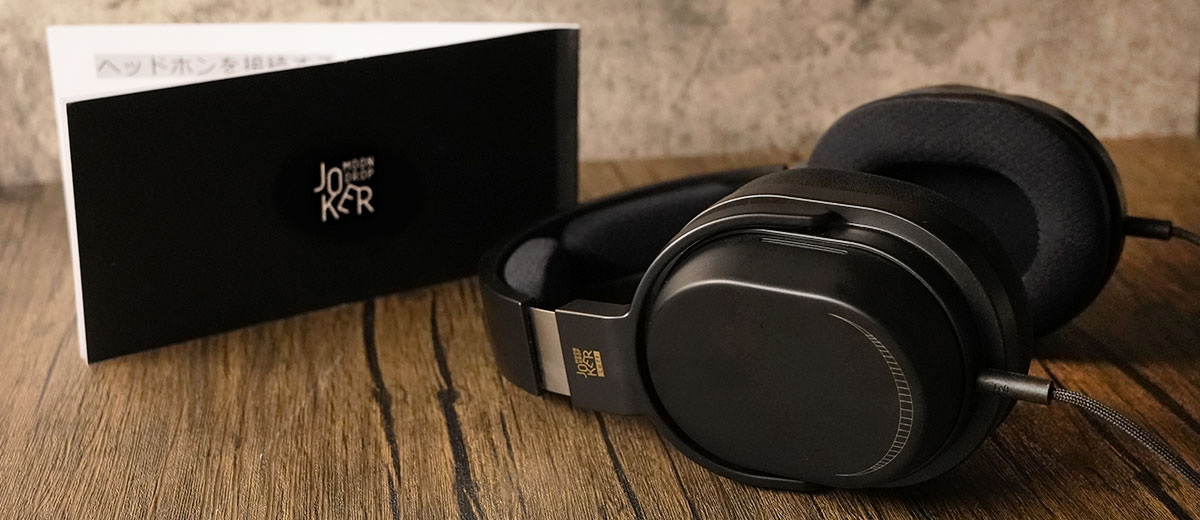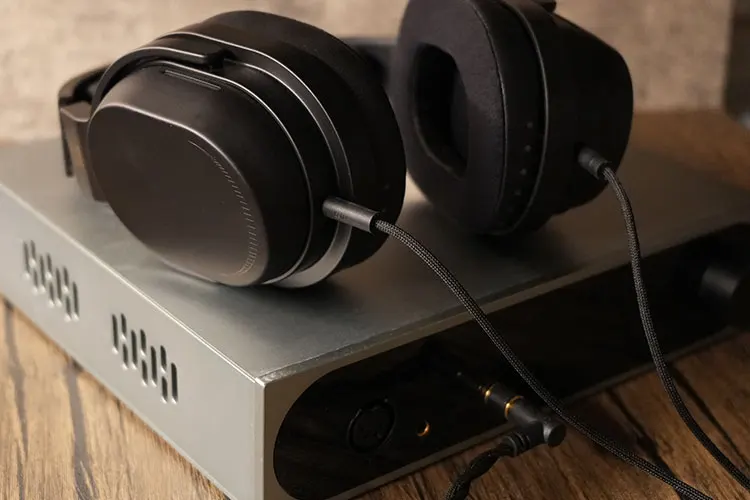Synergy
Efficiency
The Joker is 68Ω in impedance and 106dB/Vrms @1kHz in sensitivity. In practice, it is free from noises and can go quite loud on a phone or on the MacBook Air, but it will definitely benefit from stronger outputs.
Pairings
When connected to more powerful and controlled sources like the SONCOZ SGA1, the Joker benefits from sufficient power to deliver a more layered, holographic stage and firmer, more accurate bass.
The rumble in the sub-bass is more detectable, and the midrange gains more fullness that contributes to the overall balance.
The protruded treble is followed by a more natural roll-off that allows a bit more harmonics to cut through and when tuning down the bass slightly, there is good clarity and dynamics.
When connected to a less powerful DAP such as the HiBy R3 Pro II, the Joker manages to sound meaty in the bass and has a satisfactory transient response in the treble. However, the mid-bass is slightly thick, and it bleeds over to the midrange which diminishes the overall dynamics and musicality.
As always MSEB on HiBy players is a great tool to quickly tweak the sound signature and it is recommended to give it a try. I am boosting the vocal harmonics for more texture and by trimming down the bass the overall clarity could be well enhanced.
On my MacBook Air, it sounds more natural than on the HiBy player though it is still recommended to plug into a more powerful source, and to utilize some equalizing for a more natural response.

Select Comparisons
The Joker’s cover art suggests that it is designed for studio use, that is why I am putting it with two of the most popular studio cans to see how it fares.
Sony MDR-7506
Technical
The Sony MDR-7506 is one of the most accessible studio headphones around, inside its hood houses a 40mm dynamic driver of 63Ωin impedance and 106 dB/mW in sensitivity, which means it can sound quite loud with any device.
You may have noticed that the sensitivity on the Joker is the same with a slightly higher impedance rating at 68Ω. Switching between them the output volume is quite similar for the same output.
Design
The MDR-7506 is foldable and incredibly light, it is renowned for its easily replaceable parts and is a rugged beast that you can hardly destroy. The MDR-7506 has a fixed cable on the left side which may be less clumsy for studio use.
Comparatively, the Joker is more versatile for audiophiles, with its interchangeable cable design that allows upgrading to 4.4mm cables.
While the MDR-7506 looks more professional and is also a closed-back design, it is less street-friendly and with poorer isolation. The Joker has a more premium build and is more comfortable.
Performance
The Sony MDR-7506 is tuned to be clean and revealing, with a crispy treble peak that allows cymbals and hi-hats to be clearly detected, and the bass impacts very fast and light.
Compared to the Joker the Sony sounds more transparent and has a more neutrally weighted vocal body that colors it overall more balanced in tone.
The Joker colors the bass much warmer and has a slower, more elaborate bass decay which makes its bass more expressive. The more distinct and forwarded vocal image on the Joker, as well as its punchier bass, allows it to offer stronger dynamics than the MDR-7506.
With less powerful sources, the more neutral tonal balance and neutrally weighted vocal body on the MDR-7506 allow it to sound more harmonious, whereas the more altered tonality on the Joker sounds less natural.
I find more scalability with the Joker on powerful sources, whereas the MDR-7506 sounds less layered and dynamic and could be even harsher when plugged in on the more powerful devices.

AKG K240 Studio
Technical
The current production version of the semi-opened AKG K240S with a 30mm dynamic driver is rated at 55Ω and with 104 dB sensitivity, which suggests that it is quite similar to the Joker in response to power. Despite this fact, the Joker has a 50mm driver which is significantly larger.
I have the older 600Ω version of the K240 but for this time I would be comparing the Joker to a demo set of the current 55Ω version that is closer in terms of specifications, and the comparison is by using the FiiO M11S and Shanling M9 Plus which is more powerful.
Design
The K240S is one of the most recognizable designs for studio cans and is rugged. The leather headband is tough, and you can abuse it without worrying it will break.
One obvious difference between the K240S and the Joker is the cable arrangement. Most studio cans like the K240 do not separate the cable into L/R sides and do not allow using a balanced cable without modding.
Audiophile-targeted cans like the Joker split the cable to L/R sides and allow swapping to balanced cables at ease.
It is also notable that the Joker is much more comfortable as the earcups on the K240S are very shallow, your ears are almost touching the drivers, and the pads on my old pair of K240S get quite stiff.
Isolation on the Joker is obviously better too as the K240S is designed for studio use.
Performance
Putting the Joker together with the K240S, it is obvious that both headphones lean towards the treble end and have exciting energy in the upper vocal frequencies.
With a bigger driver, the Joker is able to deliver stronger punches and air in the bass, there is more warmth and roundness compared to the K240S which excels in openness and extension in the treble due to its open design.
Switching between sources, the K240S is more responsive and can be more easily powered to sound clean and swiftly articulated, while the Joker requires more swing to make the bass punchy and sound more natural.
Classical music, especially strings and woodwinds, sounds swifter on the K240S, with stronger penetration power and better openness, though the Joker is superior in detail retrieval, bass details, and dynamics when adequately powered.
Generally, the K240S is more revealing as it captures the brilliance in the treble well while maintaining fair dynamics, which is suited for critical listening, though the bass is more lacking in quantity and power compared to the Joker.
For streaming content and daily use, the more rounded presentation, stronger bass on the Joker and better isolation would be ideal for sound editing or monitoring, the tonal profile on the K240S still has clear edges over the Joker.
Our Verdict
Priced at $79.99, the Moondrop Joker presents an appealing combination of attractive aesthetics and build quality. Its spacious and clean tuning makes it a nice choice for daily gaming and multimedia needs.
While it may not provide the same level of accuracy and openness as other open-back studio headphones, it offers an affordable alternative for prosumers seeking clear vocal reproduction or smoother treble response.
Moreover, its design offers enhanced comfort compared to conventional studio headphones, and what you are listening to will not leak through the other side of the cans.
The stock tuning of the Moondrop Joker sound somewhat altered in tone when used with low-power sources and adjusting the equalizer settings to emphasize the mids can greatly enhance its overall musicality.
Despite this, the technicalities and overall experience are satisfactory, although it would benefit from improved sensitivity and a more balanced tonal profile, which could make it a killer product.
Moondrop Joker Technical Specifications
- Diaphragm: Partially Rigid Composite Diaphragm
- Frequency Response Range: 15Hz- 22kHz
- Effective Frequency Response Range: 20Hz-20kHz (IEC60318-4, -3dB)
- Sensitivity: 106dB/Vrms (@1kHz)
- Impedance: 68Ω±15% (@1kHz)
Plug: 3.5mm Stereo Jack Plug, 3.5mm on headphone-end terminations



